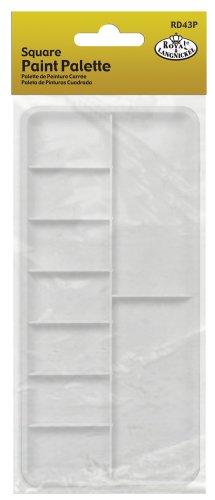What is a color palette?
A color palette is a collection of colors that are used together in a design or artwork. It is often created by artists or designers to ensure that the colors they use in their projects are harmonious and visually appealing.
A color palette typically consists of a primary color, which is the dominant color in the design, and several secondary colors, which are used to complement and enhance the primary color. These secondary colors are often chosen based on their relationship to the primary color on the color wheel, such as being complementary or analogous.
The purpose of a color palette is to create a cohesive and balanced look in a design. By carefully selecting colors that work well together, artists and designers can create a sense of harmony and unity in their work. This is particularly important in graphic or web design, where the use of color can greatly impact the overall user experience.
How are color palettes used in design?
Color palettes are an essential tool for designers in creating visually appealing and effective designs. They are used in various ways, including:
- Brand identity: Color palettes play a crucial role in establishing a brand’s visual identity. Companies often create their own unique color palettes that reflect their brand values and evoke specific emotions in their target audience.
- Graphic design: Graphic designers frequently use color palettes to create marketing materials, such as logos, brochures, and posters. By using a cohesive color palette, they can ensure that all design elements work together harmoniously.
- Web design: Color palettes are particularly important in web design, where they can significantly impact user experience. A well-chosen color palette can make a website visually appealing, easy to navigate, and effectively convey the desired message.
- Interior design: Color palettes are also utilized in interior design to create a particular ambiance or mood in a space. Different color combinations can evoke different emotions and have a psychological effect on the viewer.
How to create a color palette?
Creating a color palette requires careful consideration and knowledge of color theory. Here are a few steps to help you create your own color palette:
- Identify the primary color: Start by choosing a primary color that will be the main focus of your design. Consider the emotions and associations typically associated with that color.
- Choose complementary colors: Select a few secondary colors that work well with the primary color. These are usually found on the opposite side of the color wheel and can add contrast and visual interest to your design.
- Consider analogous colors: Analogous colors are those that are located next to each other on the color wheel. They can create a harmonious and unified look in your design.
- Test the palette: Experiment with different color combinations to see how they work together. You can use color palette generators or online tools to help you visualize how the colors will look in your design.
- Refine and adjust: Don’t be afraid to make adjustments to your color palette as needed. Depending on the specific project, you may need to tweak the colors to achieve the desired effect.
Tools for creating color palettes
There are several tools available online to help you create and explore color palettes:
- Coolors.co: This website allows you to generate color palettes based on different criteria, such as complementary colors, analogous colors, or shades of a specific color.
- Color Hunt: Color Hunt is a collection of color palettes created by designers. You can browse through different palettes and find inspiration for your own projects.
- Adobe Color Wheel: Adobe Color Wheel is a web-based tool that offers various options for creating color palettes. You can select colors using the color wheel, or by uploading an image.
- Material Design Color System: This is a color palette guide created by Google for designers and developers. It offers a set of predefined colors that work well together and are optimized for various digital platforms.
The impact of color palettes in design
The choice of color palette in design can have a significant impact on the viewer’s perception and experience. Different colors evoke different emotions and associations, and the way they are combined can influence how a design is perceived. Here are a few examples:
- A warm color palette containing reds, oranges, and yellows can create a sense of energy, excitement, and warmth. This type of palette is often used in marketing materials for products or services that want to convey a sense of urgency or passion.
- A cool color palette consisting of blues, greens, and purples can evoke a sense of calm, tranquility, and freshness. This type of palette is often used in healthcare or wellness-related designs, as well as in designs that aim to communicate professionalism and reliability.
- A monochromatic color palette featuring different shades, tints, and tones of a single color can create a sense of sophistication and elegance. This type of palette is often used in high-end fashion or luxury brand designs.
- A contrasting color palette that combines two or more colors that are opposite each other on the color wheel can create a bold and eye-catching design. This type of palette is often used in designs that want to grab attention or make a statement.






